Related Research Articles
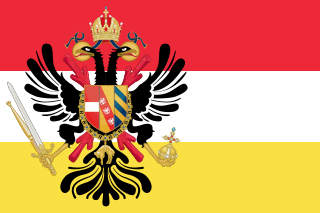
The Austrian Netherlands was the larger part of the Southern Netherlands between 1714 and 1797. The period began with the Austrian acquisition of the former Spanish Netherlands under the Treaty of Rastatt in 1714 and lasted until Revolutionary France annexed the territory during the aftermath of the Battle of Sprimont in 1794 and the Peace of Basel in 1795. Austria, however, did not relinquish its claim over the province until 1797 in the Treaty of Campo Formio.
Maximilian Emanuel, 3rd Prince of Hornes, Count of Baucignies and of Solre-le-Château, was a nobleman and Grand Huntsman of Brabant. His father was Philippe Emanuel, 2nd Prince of Hornes, and his mother was Princess Marie Anne Antoinette of Ligne.
The States of Brabant were the representation of the three estates to the court of the Duke of Brabant. The three estates were also called the States. Supported by the economic strength of the cities Antwerp, Brussels and Leuven, the States always were an important power before the rulers of the country, as was reflected by the charter of the duchy.

The House of Hornes was an important European noble family, which became extinct in the male line in 1826. The name refers to Horn, a small village in Limburg, located in the Netherlands.
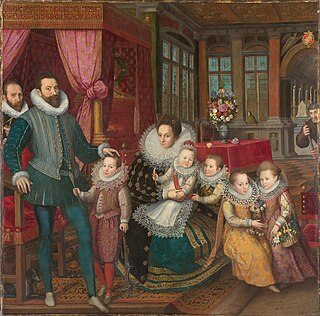
The Belgian nobility comprises individuals and families recognized by the Kingdom of Belgium as members of a certain class of persons. Historically, these individuals were a socially privileged class enjoying a certain degree of prestige in society. In contemporary society, much of the historic social privileges associated with being a member of the nobility has become somewhat reduced reflecting the present-day notion of egalitarianism.
Gentleman of the Bedchamber was a title in the royal household of the Kingdom of England from the 11th century, later used also in the Kingdom of Great Britain.
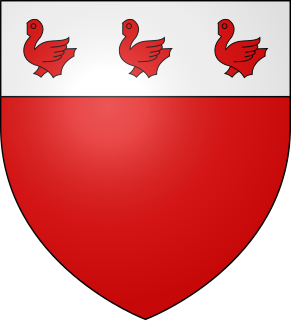
d' Ursel is the name of an important old Belgian noble family of German origin. The chief of the House is styled the Duke of Ursel, others are Count d'Ursel.

Charles-Joseph, 4th Duke d'Ursel and of Hoboken, Prince of Arches and Charleville and Count of Grobbendoncq was a statesman and minister in the United Kingdom of the Netherlands and later Belgium.

Jean Charles Joseph, Count of Merode, Marquess of Deynze was a noble of the Austrian Netherlands, born in the Prince-Bishopric of Liège. He was Lieutenant-Feldmarschall of the Holy Roman Empire, Knight of the Order of the Golden Fleece.

The House of Lalaing is a noble family from the south of Flanders which played an important role in the history of the County of Hainaut and of the Netherlands.

de Lannoy is the name of a noble family that takes its name from the French town of Lannoy, Nord. The name comes from l'Annoy which means «the alderwood» in Picard French of Flanders.

The House of van der Noot is a Belgian Noble family.
Charles Emmanuel Joseph, 1st Prince de Gavre, 4th Marquess of Ayseaux, Count of the Empire was the first Prince de Gavre, created by Emperor Charles VI in 1736. He was the son of Rasse II François of Gavre, 3rd Marquess of Ayseau, and Marie Catherine de Brias.
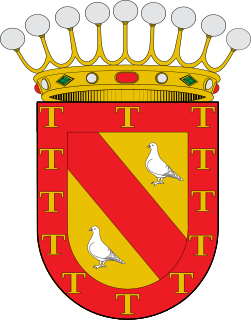
Coloma or de Coloma or Colomba is an old important Spanish Noble House. A branch belongs to the Flemish nobility, and became the Counts of Bornhem. Other branches became the Counts of Elda, Marquesses of Espinar, Marquesses of Noguera and Marquesses of Canales de Chozas.
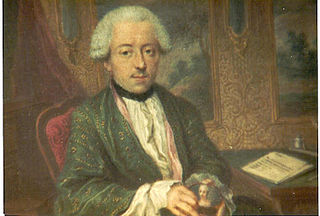
Charles Elisabeth Conrard, 2nd Duke d'Ursel and of Hoboken, Prince of Arches and Charleville and Count of Grobbendoncq (1717–1775) was a Belgian Duke. He succeeded his father and became the second Duke of Ursel in 1738.
The Lords of Corswarem are the heads of the noble house of Corswarem-Looz. The current Dukes of Corswarem are descendants of Lords of Corswarem. The current Duke, Robert-Camille is the 11th Duke of Corswarem-Looz.
Eugéne-Hyacinthe-Marie-Joseph-Ignace de Lannoy, 5th Count of la Motterie, baron of Aix and Sombreffe was a noble functionary during the Austrian rule of the Netherlands.
The Lords of Ayseau(x) belonged to the feudal nobility of Brabant.
References
- ↑ Den grooten Brugschen comptoir-almanach ...by Pieter de Sloovere & Joseph de Busscher, 1789; pag. 2
- ↑ Almanach de la cour de Bruxelles sous les dominations autrichiennes et française, la monarchie des Pays-Bas et le gouvernement belge, de 1725 à 1840, formant l'introduction à l'almanach royal officiel de Belgique/ Tarlier, 1864